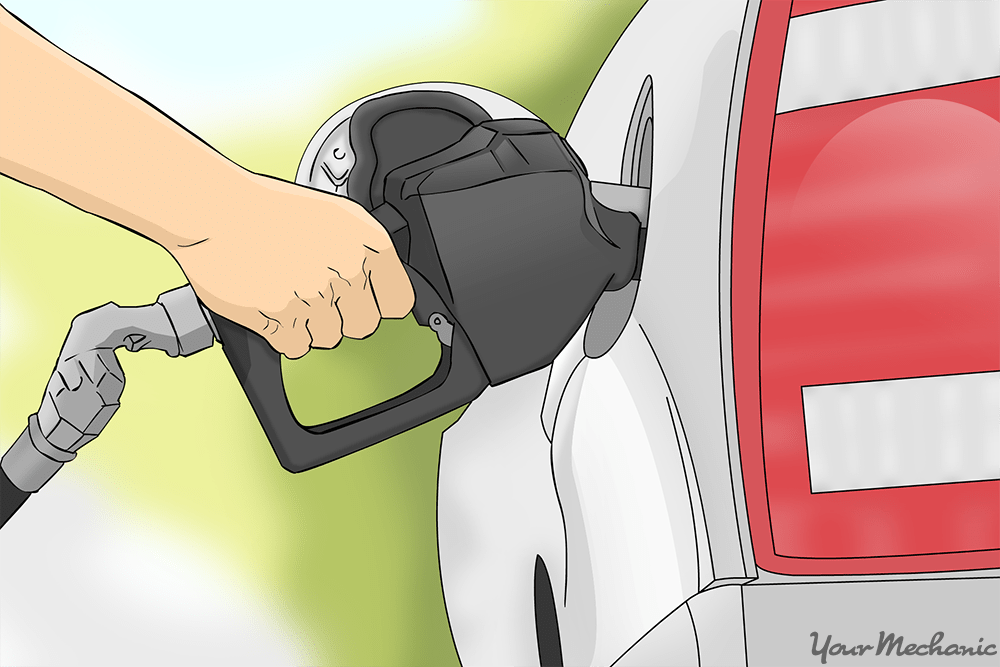To put gas in the car, pull up to the gas pump, open the fuel door, unscrew the gas cap, insert the nozzle, select the fuel grade, and pump the gas until full. When it’s time to refuel your vehicle, knowing how to put gas in your car is essential.
Whether you’re a new driver or just need a refresher, this guide will walk you through the simple steps of fueling up your car. By following these straightforward instructions, you can easily navigate the gas station and ensure your vehicle stays running smoothly.
Additionally, understanding the process of putting gas in the car can help you feel more confident and independent on the road. Let’s dive into the details of this basic but crucial task.
1. Getting Ready
1. Getting Ready
1.1 Checking The Fuel Gauge
Before heading to the gas station, make sure to check the fuel gauge on your car dashboard to see how much gas is left in the tank.
1.2 Parking The Car
Find a gas station and park your car at the pump. Make sure the gas tank door is on the side you’ve parked.
2. Opening The Fuel Door
To open the fuel door and put gas in the car, locate the fuel door release lever inside the car. Pull the lever to release the fuel door, then twist off the gas cap and insert the pump nozzle into the fuel tank.
2.1 Locating The Fuel Door Release
Locating the fuel door release is typically a straightforward process. In most vehicles, you can find the fuel door release lever or button either on the driver’s side door panel or on the floor beside the driver’s seat.
2.2 Opening The Fuel Door
To open the fuel door, once you have located the release, simply pull the lever or press the button depending on your car model. You will hear a click sound, indicating that the fuel door is now unlocked and ready to be opened.
3. Selecting The Correct Fuel
When putting gas in your car, it is crucial to ensure you select the correct fuel type. Follow these steps to determine the right fuel for your vehicle:
3.1 Checking The Fuel Type
Ensure to check your vehicle’s fuel door or owner’s manual to determine which fuel type it requires.
3.2 Determining The Recommended Fuel Type
- Refer to the label on the gas pump to confirm you are selecting the appropriate fuel grade.
- Avoid using a lower octane fuel than recommended to prevent engine knocking.
- If in doubt, consult your vehicle manufacturer or a mechanic for guidance.

Credit: www.wikihow.com
4. Inserting The Gas Nozzle
Once you have removed the gas cap, it’s time to insert the gas nozzle and fill up your fuel tank. This is a simple process, but it’s important to follow a few steps to ensure everything goes smoothly.
4.1 Removing The Gas Cap
Before you can insert the gas nozzle, you need to first remove the gas cap. This can usually be done by turning it counterclockwise. Some newer cars may have capless fuel systems, in which case you’ll simply need to open the fuel door.
4.2 Inserting The Nozzle Into The Fuel Tank
Once the gas cap is removed, carefully insert the nozzle into the fuel tank opening. Make sure it is securely placed and that there is no fuel leaking. It is important to not force the nozzle, as this could cause damage to your car’s fuel system.
5. Pumping Gas
When putting gas in the car, start by parking next to the pump. Turn off the engine and open the gas cap. Insert the nozzle, select the fuel grade, and squeeze the handle to begin pumping gas. Once the tank is full, replace the nozzle and securely close the gas cap.
Your car’s fuel gauge is nearing empty, and it’s time to fill up the tank. Pumping gas is a straightforward process that can be seen at almost every gas station. However, if you’re a new driver or have never pumped gas before, it’s essential to know the step-by-step process to ensure a successful refueling experience. In this section, we’ll cover the two main steps involved in pumping gas: selecting the pump and activating the pump and filling the tank.5.1 Selecting The Pump
When you arrive at the gas station, take a moment to choose the most suitable pump for your vehicle. Look for the signs indicating the different types of fuel available, such as Regular, Plus, or Premium. It’s crucial to select the pump that corresponds to the type of fuel your car requires. If you’re unsure about the type of fuel required for your vehicle, check the car’s user manual or look for a sticker located inside the fuel filler door, indicating the fuel grade. Additionally, many gas stations have labels on the pumps themselves, specifying the fuel type. Take note of these labels to avoid any potential damages to your car’s engine.5.2 Activating The Pump And Filling The Tank
Once you’ve selected the appropriate pump, it’s time to activate it and start filling your tank. Follow these simple steps for a smooth and successful refueling process:- Park your vehicle close enough to the pump, ensuring the fuel cap is easily accessible.
- Turn off your engine and any electronic devices inside your car, including your radio, to prevent any potential sparks.
- Open your car’s fuel door by either pressing a button near the driver’s seat or pulling a lever located on the floor near the driver’s door.
- Remove the fuel cap and set it somewhere safe.
- Take out the gas nozzle from the pump and insert it firmly into the fuel filler neck of your vehicle.
- Press the required fuel grade button on the pump, corresponding to the type of fuel your car needs.
- Squeeze the nozzle’s trigger gently to allow the fuel to flow into your tank. Avoid squeezing it too hard to prevent spills or splashes.
- Observe the fuel level on the pump and try not to overfill your tank. If you’re unsure about the capacity of your tank, refer to your car’s user manual for guidance.
- As the fuel is filling your tank, take this opportunity to clean your windshield or perform any other quick maintenance tasks available at the gas station.
- Once your tank is almost full or the pump automatically stops, release the trigger and carefully remove the nozzle from the fuel filler neck.
- Securely place the gas nozzle back onto the pump, ensuring it is properly returned.
- Put the fuel cap back onto your vehicle and make sure it is tightly sealed.
- Close your car’s fuel door.
Credit: wrench.com

Credit: www.yourmechanic.com
Frequently Asked Questions On How To Put Gas In The Car
Do You Turn The Car Off To Put In Gas?
Yes, it is recommended to turn the car off before putting in gas for safety reasons.
How Do You Use A Gas Pump At A Station?
To use a gas pump at a station, insert payment method, select fuel grade, lift nozzle, place in tank, squeeze handle, and fill tank.
How Do You Fill A Gas Can At A Gas Station?
To fill a gas can at a gas station, place the can on the ground. Unscrew the cap and insert the nozzle. Squeeze the handle to dispense fuel, being careful not to overfill. Replace the cap tightly and secure the can in your vehicle.
How Do You Know How Much Gas To Put In Your Car?
To determine how much gas to put in your car, check the fuel gauge on your dashboard. The gauge displays the level of fuel in your tank. When it’s low, fill the tank until the gauge reaches the desired level.
Avoid overfilling to prevent fuel spillage or damage to the system.
How Do I Put Gas In My Car?
To put gas in your car, park near the pump, open your car’s fuel door, insert the nozzle into the gas tank, select the desired fuel grade, and wait for the tank to fill. Remember to replace the gas cap before driving away.
What Are The Different Fuel Grades For Cars?
The most common fuel grades for cars are Regular (87 octane), Mid-Grade (89 octane), and Premium (91-93 octane). The octane rating determines the fuel’s resistance to knock and is usually recommended by the manufacturer.
How Do I Pump Gas Without Spilling?
To avoid spills while pumping gas, make sure the nozzle is securely inserted into the gas tank, hold the nozzle with your hand, and avoid overfilling by stopping once the pump automatically shuts off. Additionally, be cautious of static electricity and refrain from using your phone or smoking.
Conclusion
As you can see, putting gas in your car is a simple yet crucial task. By following these steps, you can ensure a smooth and efficient refueling process. Regular maintenance of your vehicle’s fuel system is essential for its performance and longevity.
Remember to stay safe and mindful at the gas station. Now you are ready to hit the road.
